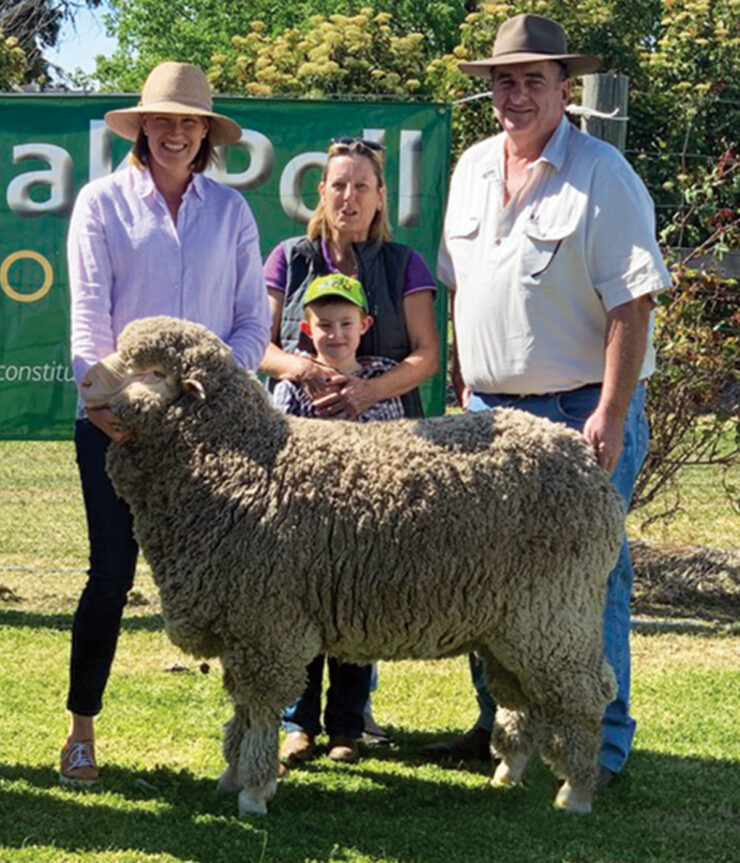Years of careful selection of One Oak Poll genetics have resulted in a lamb wool clip that has ticked all the boxes for the Hoskinson family.
Mark and Helen Hoskinson run a flock of about 1000 Merino ewes in country at Kikoira, near West Wyalong, where their goal is to run a true flock of dual-purpose sheep, not one that just claims to be.
The performance of their lambs this year has been stellar and shows the selection of plain bodied rams without compromising on wool quality has been on point.
Their wether lambs, born in May/June 2021, were first shorn at six to seven months, and cut 2.5-3 kilograms of 16.4-17-micron wool.
They were then shorn again in July and while the micron was slightly higher at 17-18 micron, the wool cut was also up at 3.5-4 kilograms.
“We are so happy with how those wether lambs have performed, cutting two clips of quality wool within their first year of life, and both of these clips met the 65mm length standard,” Mark said.
“They have earned their wool value from six kilograms of wool before they are a year old, and then could be sold into the prime lamb market.
“While we have chosen not to sell most of them in winter due to the dip in returns, the early sales in March where we sold them in the Griffith saleyards saw them make $191.
“You can talk about dual-purpose, but these sheep truly are that.”
The bonus of running Merinos, Mark said, was that when prime lamb rates dropped, there was the option to hold onto them rather than be forced to sell.
In contrast, those with first or second-cross lambs were almost forced to meet the market given the big discounts made when lambs cut their teeth.
The wether lambs they retained are still growing in value, producing more wool, earning more income and can be sold as hoggets or as wethers to someone wanting to produce wool.
Mark said they had not been afraid of spending to select the genetics to fit their breeding goal and focused on staple length as well as a high comfort factor in their sire selection.
Their flock is classed by Alison Rutledge from Woodstock, NSW, and she has guided their operation to maximising returns from both wool and meat, without comprising on either.
“We don’t want the biggest sheep – it creates issues with shearers – we want dual purpose sheep with white wool that the buyers want.”
Their latest clip of lamb’s wool was keenly sought, and half was bought by Italian buyers and the other by the Chinese.
Knowing their clip, which is sold under Sustainawool accreditation, is attracting European interest is another vote of confidence in what they are doing.
“We love our wool and want to produce the best we can, with style and brightness and a high comfort factor, but the fact we can also target the prime lamb market with our wethers is a result of choosing specific genetics from One Oak Poll,” Mark said.











